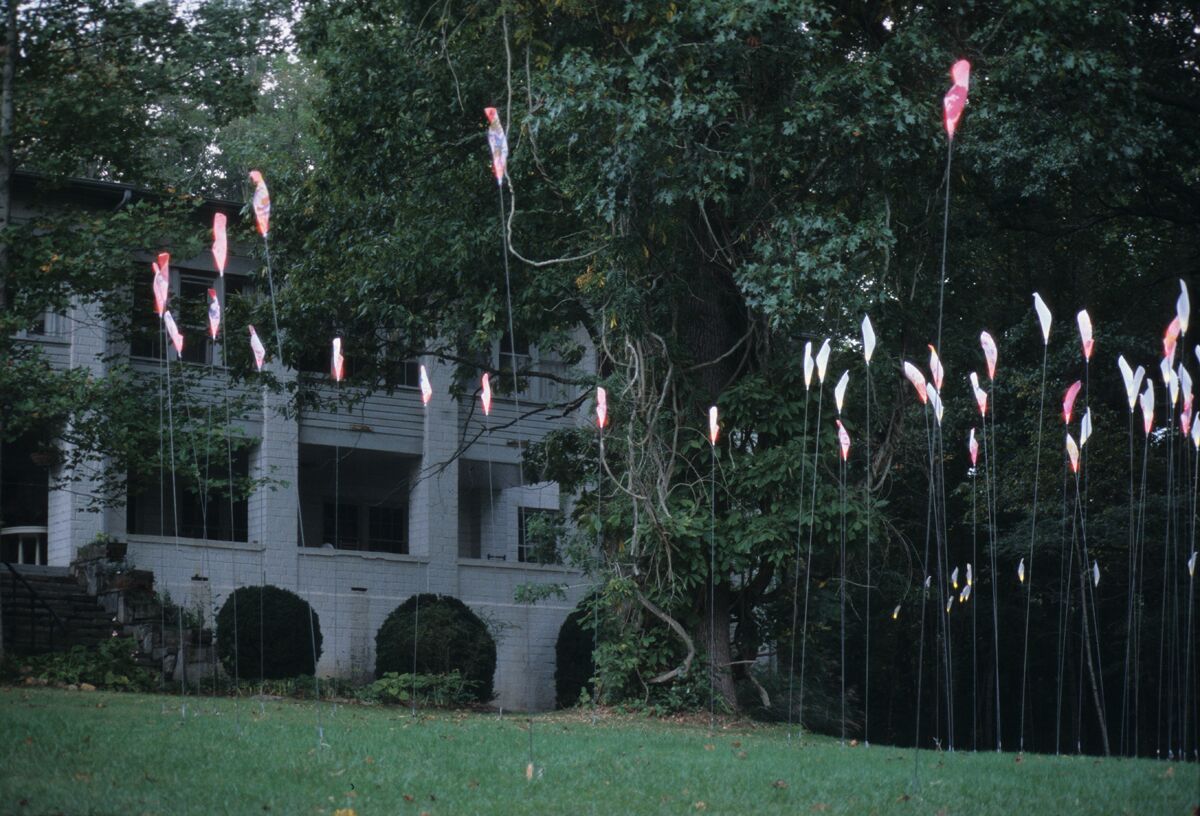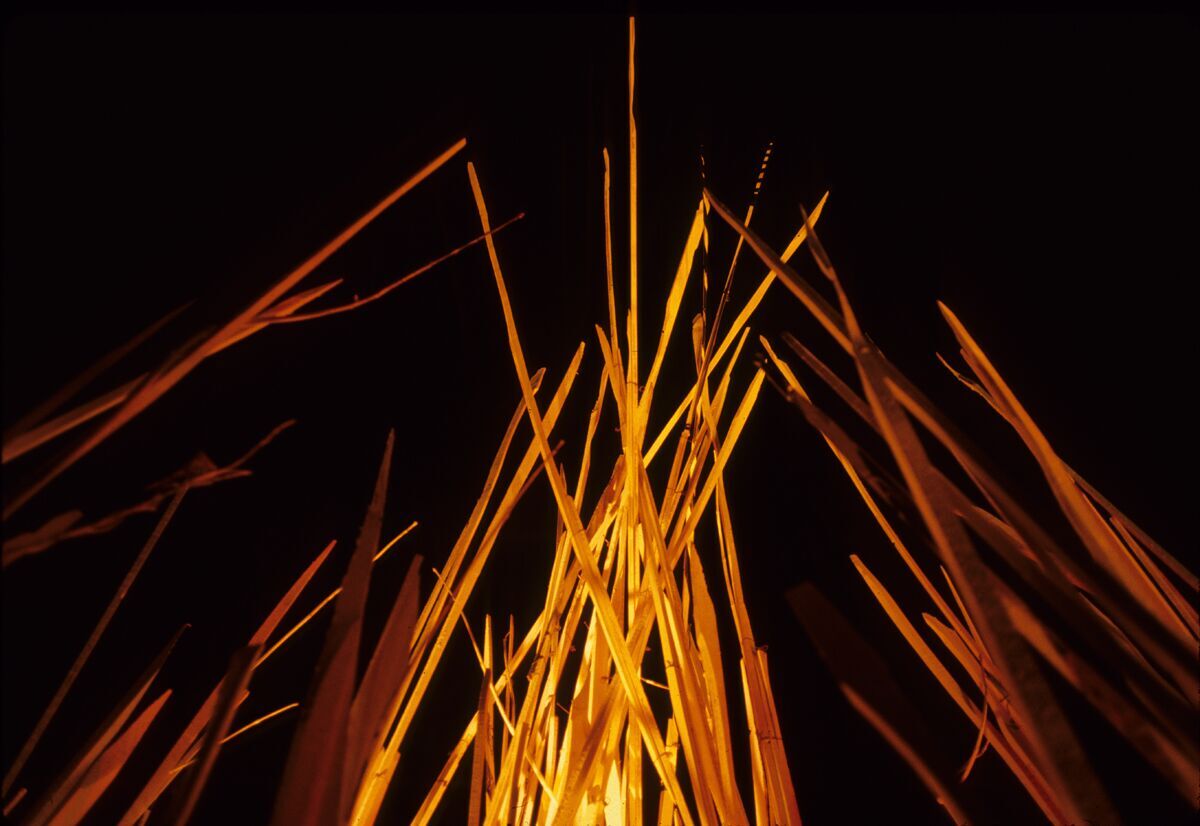Artist’s Statement
The works contained on this web site are the environmental installations incorporating my interests in art, architecture and nature. Nature is live; constantly changing. Temporal and transitory, these installations are created to respond to the life of the site. Created as public art, set in a public place, these works are to be viewed by site visitation and stored by electronic and photographic documentation so that it might be visited and experienced again. Emphasis is placed on creating, installing works dedicated to a monumental awareness of our environment, and not, an environmental awareness of our monuments. Unusual in form, the content of these works are quite traditional—a salutary interpretation of nature.
Biographical Sketch
Daniel Engelke is a sculptor and has exhibited his works throughout the United States and abroad. He has created sculpture utilizing a large variety of materials. A faculty member at Purdue University for twenty-six years he is currently Professor Emeritus in Art and Design. National and international recognition has occurred through approximately seventy invitational and peer reviewed exhibitions. From 2000-2004 his work was being exhibited on three continents and received five top merit awards in national and international exhibitions. Engelke has been an invited artist-in-residence and lecturer at many institutions. International art institutional support of significance includes the project endorsement of the Tate Gallery St. Ives, St. Ives, England. He served as keynote speaker for the National Society for Education in Art and Design Annual Conference in London. Other honors from distinguished British arts institutions include being a Summerfield Charitable Trust Fine Art Lecturer at Cheltenham and Gloucester College of Higher Education, Cheltenham and guest lecturer at Falmouth School of Art and Design, Falmouth.

The National Endowment for the Arts, the Rockefeller Foundation, and the Indiana Arts Commission are among the major arts organizations awarding grants for his art and research. Recognition and endorsement from other art organizations would include Penland School of Crafts and the Arts/Industry Residency at the John Michael Kohler Arts Center. Noteworthy corporate or private support has come from Sculpture, Objects, and Functional Art (S.O.F.A.; Expressions of Culture Inc.), Dow Chemical Corporation and Johnson Controls Corporation. Engelke’s environmental art has received substantial and favorable endorsement by the print and electronic media. “Light Path” (1987), was produced into a document and broadcast nationally on PBS, CBS, and NBC; and internationally on BBC-TV. The document is held in many permanent collections of libraries, galleries, and universities in the U.S., Europe and Asia. Additionally, the print media produced over forty articles on his work including USA Today and The Sunday Observer (London U.K.). The sited installations “Lantern’s from the Dance”, and “Beacon’s of Hope” (1997-98) at Navy Pier Art Exposition in Chicago received excellent media attention including public, and arts support. His last installation, “Wood Wind” (2009) at Tenison Bay, Peninsula State Park was documented by Wisconsin PBS. https://video.wpt.org/video/in-wisconsin-wood-wind/
Dan Engelke on “Environmental Art”
Simply, define your Environmental Art and how does it differ from other art?
Artists traditionally produce works with relatively permanent materials (e.g.; paints, paper,, textile, metal, clay and stone). Often this is represented in a single impression or “frozen moment”. My art differs in that it is more of a live performance lasting a relatively short time. This art is designed to elevate an awareness of nature in real time and actual life. The sculptures are there to arrest our attention. The site is the art, not the sculptures. I try to highlight the interplay of selected natural conditions that are found at the site itself: light elements (shadows, reflections); surface characteristics (rhythm, structure and texture); and physical forces (wind, balance and current).
Your art lasts such a short time, doesn’t that bother you?
Actually, no. I believe that some of our most powerful, poignant moments and impressions in life are very brief. In fact we begin to diminish the value of all things (including art) with familiarity… its human nature. Visually, we can absorb a great deal of information very rapidly. Indeed, once you’ve seen a shooting star; you won’t forget it.
Is your environmental art, ecological?
There is a semantic difference in the two words. The materials I have used in past works range from plastic to grasses, steel to bamboo and ice to earth. I choose materials to fit the effect of the concept I am trying to capture. I will reuse some materials. My work is never left at the site to decompose. Most of the materials are recyclable and I try to use only materials sympathetic to environmental issues.
You use a lot of water sites, why?
There are several reasons. First, there are few surfaces on this earth that visually translate climatic change as effectively as water. Few surfaces show the moods of the environment such as light, wind, color and reflection as poignantly as water. Secondly, water and particularly fresh water is a very precious resource on this planet. I feel compelled to do whatever I can to elevate its fragility and celebrate its presence. Lastly, I believe from a purely evolutionary sense that we are drawn to the juncture of land and water. There is some ancient force that goes beyond the simple explanation that we “like it by the water”. These water sites, by the way are the most difficult, time consuming and expensive of all sites.
Why do you use light?
Degrees of dark and light (value), in an exterior environment is always critical so the sculptures will be distinguished in that location. The visual balance being not so great to overstate the works presence but enough change in light value to be able to see it. Easier said than done. The use of artificial light is an important method of translating what life is happening within the site during darkness hours. This truly gets to the reality and essence of this work. The site is always alive (24/7) and just because we cannot see it in darkness does not diminish the fact. Artificial light I consider to be a life form and a strong sculptural tool. This tool allows me to translate and communicate what changes and rhythms are happening to the site during darkness hours.
All this sounds pretty abstract and “artsy”. Do most people understand what you are trying to do?
Basically, yes. This has been the real shock. It has been amazing how many people from all walks of life can understand these works. I do have some stories that have really touched me. It’s ironic since I started this series some 30 years ago as a rather “academic inquiry”. The public interest has been a total surprise and the level of comprehension very gratifying.
Do you sell anything? How are you funding this art?
Since these works are created sitespecific, therefore, it would not be appropriate to see them at another location. I have allowed a few sculptures to be sold as a fundraiser. I have sold documentary images and videos in conjunction with the sponsoring gallery or institution. My art is funded by grants, the sponsoring arts organization, private donations and myself. Corporate donation is often secured if their product is being used in the work.
Who are the artists who have influenced you?
Michael Singer was important early. I liked his directness and artistic sensibilities in the environment. Three sculptors from the UK; Richard Long, Andy Goldsworthy and David Nash I highly respect. I saw their show at the Contemporary in Chicago in the ‘80s and realized what powerful environmental ideas were going on in the UK. The one influence that has been always present in most of my adult life has been Frank Lloyd Wright. Now, I find some of his writings very valid and still inspiring.
How do you choose your sites?
I usually start thinking about the next site when I working on the present one, at least in general terms. For example, I knew while creating a work in the arid west that the next one would be about water. From there, site selection becomes a matter of coordinating artistic and practical matters. There are often compromises because what I perceive to be ideal and what I know the sponsoring agency wants are a little different. I try to stay flexible and often the compromise sites provide great challenges and rewards.
Why does your work generate so much press?
It’s different, positive and people can relate to it. There are likely other reasons but generally that’s it. Someone said that these works; “went from the art page to the front page”. I never expected the kind and amounts of press this work has generated and I never created it for that reason.
What was your most successful work?
Based upon the largest amount of people and press interest it was probably “Light Path” 1987. However, “Wood Wind” 2009 I consider my best effort. I have done many very small, brief sketches some that are quite important to me. Sometimes the simplest works can be very moving.
Your biggest “nightmare”?
Probably “Light Path”. I was not prepared for the scale of this work; mentally, physically and logistically. We did not prepare for the weather changes very well. Also, a great deal of pressure from all the public interest and press was unnerving.
Click here to edit Spacer module.



